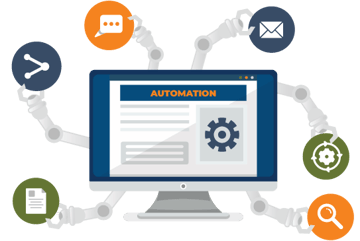In this autocast, we will discuss some of the superpowers that raised the level of the standard automation framework and help test the application more rigorously compared to the standard approach.

Over the past few years, organizations have widely implemented automation testing frameworks across their software, web, and mobile applications. An environment for carrying out test plans and producing repeatable results is provided by a typical automation framework. They are specialized tools that assist you with routine test automation tasks. A tried-and-true, affordable strategy for enhancing software development is test automation. Therefore, your test results and QA timelines may depend greatly on your choice of test automation framework.
Since these frameworks have standard features, testers often have to think out of the box in order to add enhanced features to them to increase the output of the automation framework and improve the return on investment. In this blog, we will discuss some of the additional features that can greatly improve the functionality of the standard automation framework and help test the applications more rigorously compared to the standard approach.
Features To Improve Your Automation Framework
Before we get into the benefits of frameworks, let's define a test automation framework. A set of guidelines or rules for developing and designing test cases is known as a testing framework. This offers customer a streamlined environment that enables them to create, execute, and analyze automated test scripts effectively. Let's look into these features one by one.
1. State Management
State management is the ability of the framework to resume the test suite execution from a state where the suite crashed during the last execution due to some unforeseen issue, like machine restart, browser crash, or network crash. Also, it should include the ability to merge the report for multiple executions at the end. As an example, if a suite takes 10 hours for execution and it has crashed after 6 hours, then in normal cases, the suite execution will be started from the first test, but with state management, we can save 6 hours during the next run. Using this feature, automation teams can save a lot of time, which has been wasted in case of unforeseen issues, like, re-running the automation suite from the first test.
2. Visual Verification
In regular automation frameworks, Selenium WebDriver is specifically based on the locator only, and does not validate the element's position. A capability can be added to a framework to check the position of an element, which can ensure that element is at the correct position in UI. This feature will help us to do dual verification over elements during automation runs, i.e. both elements’ existence, and their position.
3. Webpages Loading Time
Validates the loading time of every page and element on performing any action. This is helpful to keep track of the application's performance and automation scripts. Also, helps us to handle unwanted failures due to page load or element visibility issues. Additionally, we can track the loading time of elements and actions. With the help of generated data, we can analyze the performance of the application and improve it.
4. Network Logs and Errors Verification
Ensures that no errors are being thrown in the network logs while performing any actions on the UI of the application. This will ensure a clean network flow without any interruptions. It will help testers to identify the root cause of any issue whether it is related to the backend API or any third-party API.
5. Auto-assigning of Scripts
After the execution of the test suite, it is a manual process to assign the failed scripts to script authors. Functionality can be added to send the list of failures to owners automatically. Moreover, a monthly report can be generated to check the scripts for which automation engineers fail frequently or identify the issues as soon as possible.
Conclusion
At QASource, our specialists can evaluate your current software architecture and help you create a strategy for effectively putting a test automation framework in place. We can help you to enhance your existing automation frameworks to improve the overall output. To learn more about our automation testing services, contact us today.
Have Suggestions?
We would love to hear your feedback, questions, comments and suggestions. This will help us to make us better and more useful next time.
Share your thoughts and ideas at knowledgecenter@qasource.com




